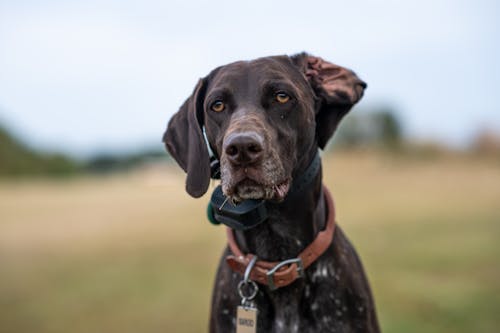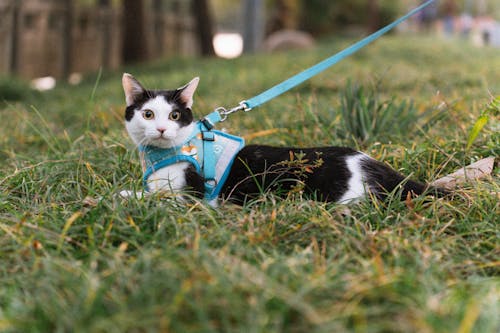Introduction: Prioritizing Pet Safety
As a pet owner, your furry friend’s safety is a top priority. Whether they’re lounging at home or exploring the outdoors, pets face risks like toxic foods, traffic, or getting lost. At Cute Pets Lovers, we’re dedicated to helping you protect your dog or cat with practical, expert-backed tips. This guide covers everything from creating a safe home environment to preparing for outdoor adventures. With insights from sources like the ASPCA, we’ll explore pet identification, microchipping, training, and more to keep your pet secure. Let’s dive into making your pet’s world a safer place!

A dog on a leash, ready for a safe walk. Image source: Pexels (Free to use).
Why Pet Safety Matters
Pets are family, and keeping them safe ensures they live long, happy lives. According to the Humane Society, thousands of pets go missing or get injured annually due to preventable hazards. From toxic plants to unsecured yards, small oversights can lead to big problems. Understanding risks and taking proactive steps—like microchipping or training—can make all the difference. This guide breaks down safety measures for both home and outdoor settings.

A cat relaxing in a pet-safe home. Image source: Pexels (Free to use).
Creating a Safe Home Environment
Pet-Proofing Your House
Start by pet-proofing your home to eliminate hazards. Common dangers include:
- Toxic Foods and Plants: Chocolate, grapes, and lilies are toxic to pets. Store food securely and check the PetMD list of toxic plants.
- Cords and Small Objects: Tuck away electrical cords and keep small items like toys or coins out of reach to prevent choking.
- Cleaning Supplies: Store chemicals in locked cabinets to avoid accidental ingestion.
Secure Spaces
Ensure windows and balconies have screens to prevent falls, especially for cats. Use pet gates to block off dangerous areas like staircases. A cozy, safe space—like a crate or bed—gives your pet a secure retreat.
A cozy pet bed in a safe home environment. Image source: Pexels (Free to use).
Pet Identification and Microchipping
Lost pets are a heartbreaking reality, but proper identification can bring them home. Always use a collar with ID tags listing your contact information. Microchipping is even more effective—AVMA reports that microchipped pets are 2–3 times more likely to be reunited with their owners.
How Microchipping Works
A microchip is a tiny device implanted under your pet’s skin, containing a unique ID number. Vets or shelters can scan it to contact you. Ensure you register the chip with a national database and keep your details updated.
Tips for Effective Identification
- Check tags regularly for wear and tear.
- Use GPS collars for real-time tracking.
- Update microchip info after moving or changing phone numbers.

A dog wearing an ID collar for safety. Image source: Pexels (Free to use).
Safe Outdoor Adventures
Leash Training
Always use a sturdy leash for dogs during walks to prevent them from running into traffic or chasing animals. Cats can also be leash-trained with harnesses for safe outdoor exploration. The AKC recommends positive reinforcement for leash training.
Avoiding Outdoor Hazards
Watch for dangers like antifreeze puddles, sharp objects, or aggressive animals. In hot weather, avoid walking on hot pavement, which can burn paws. In cold climates, protect pets with booties or coats.

A cat safely exploring outdoors on a harness. Image source: Pexels (Free to use).
Training for Safety
Training is a cornerstone of pet safety. Commands like “stay,” “come,” and “leave it” can prevent dangerous situations. For example, teaching “leave it” stops your dog from eating harmful substances. Use positive reinforcement—treats, praise, or play—to make training fun.
Training Tips
- Start early, but older pets can learn too.
- Keep sessions short (5–10 minutes) to maintain focus.
- Practice in different environments to generalize commands.
Check out PetMD’s training guide for detailed techniques.
Emergency Preparedness
Be ready for emergencies with a pet first-aid kit, including bandages, antiseptic, and your vet’s contact info. Know the location of the nearest 24/7 vet clinic. Create an emergency plan, including a trusted neighbor to care for your pet if you’re unavailable.
Signs Your Pet Needs a Vet
- Difficulty breathing or excessive panting.
- Refusal to eat or drink for over 24 hours.
- Sudden aggression or lethargy.

Checking your pet for signs of distress. Image source: Pexels (Free to use).
Seasonal Safety Tips
Different seasons bring unique risks. In summer, keep pets hydrated and avoid overheating. In winter, protect against frostbite and de-icing chemicals. During holidays, secure decorations and avoid giving pets table scraps.
Pro Tip: Create a seasonal checklist to stay on top of hazards year-round.
Building a Safe Routine
Consistency is key. Regular vet checkups, updated vaccinations, and flea/tick prevention keep your pet healthy. Monitor their behavior for changes, as these can signal health or safety issues. A daily routine of exercise, play, and rest promotes well-being.
Have you noticed any safety concerns with your pet? Share your tips in the comments to help other pet owners!
Conclusion: A Safe Pet is a Happy Pet
Keeping your pet safe at home and outdoors is about preparation, awareness, and love. From pet-proofing your home to microchipping and training, these steps ensure your dog or cat thrives. At Cute Pets Lovers, we’re here to support you with expert advice. Start implementing these tips today, and let us know how they work for your pet in the comments! Together, we can create a safer world for our furry friends.
Join our pet-loving community! Visit Cute Pets Lovers for more tips and tricks!
